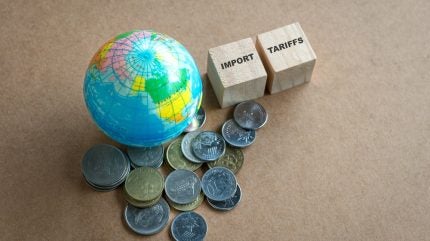Should environmentalists support Trump’s tariffs?

SHOULD ENVIRONMENTALISTS SUPPORT TRUMP’S TARIFFS?
Tariffs
and environmental policy rarely overlap neatly, especially when talking about
Trump’s brand of transactional populism, writes Robert P. Antoshak, VP of
strategic global sourcing and development at Grey Matter Concepts.
With
all the attention focused on Trump’s tariffs these days and the implications
for corporate bottom lines, sustainability and environmentalism have been
kicked to the curb. For sure, sky-high tariffs can suck the oxygen out of
corporate boardrooms, leaving sustainability on the sidelines gasping for air.
Yet, harm to the planet continues at an alarming rate.
There’s a surprising amount to unpack from
Trump’s tariffs in terms of environmental policy. It turns out that the answer
isn’t as simple as yes or no; rather, it’s tangled in a web of competing
trade-offs, global supply chains, and the messy realities of international
politics.
Consider this: intentionally or not, Trump’s
tariffs can have environmental benefits. For instance, tariffs typically make
imported goods more expensive, which can encourage local sourcing and shorter
supply chains. Fewer goods crisscrossing oceans means fewer carbon emissions
from shipping and logistics, potentially reducing pollution. Shorter, more
localised supply chains — especially in industries like apparel or steel —
often mean greater oversight, stronger regulatory compliance, and less room for
environmental abuses.
If tariffs bring manufacturing closer to home, the result could be a cleaner,
greener supply chain overall. Moreover, tariffs might give domestic industries
financial breathing room, allowing them to invest more seriously in
sustainability initiatives. Companies protected from cheaper international
competition might be more willing (and able) to innovate, adopting cleaner
technologies and less wasteful manufacturing processes. In theory, tariffs
could thus become an indirect driver of domestic environmental improvement by
shifting incentives away from low-cost, high-impact production abroad.
Unforeseen consequences of tariffs
But that’s not the whole story — not by a
long shot. Tariffs are blunt instruments. Trump’s tariffs weren’t crafted with
sustainability in mind; they were built to protect domestic industries and
address trade imbalances, not environmental stewardship. This disconnect raises
serious concerns about unintended environmental consequences.
First and foremost is the problem of
shifting production elsewhere, creating “carbon leakage.” The scenario plays
out like this: if tariffs make it too costly for companies to source products
from traditional trading partners (say, China or Mexico), businesses don’t
necessarily start making goods domestically. Instead, they often move
production to countries where environmental regulations barely exist. Imagine
apparel companies shifting operations from regulated factories in Latin America
to cheaper, environmentally problematic factories in Bangladesh or Cambodia.
The result? Even higher levels of global environmental harm offset any local
gains.
The affordability of sustainable products
also suffers under a tariff-heavy regime. As we saw during Trump’s first term,
tariffs on solar panels imported from China serve as a cautionary example.
Instead of significantly boosting US solar manufacturing, steep tariffs simply
made solar energy more expensive in the US, slowing down adoption rates. Rather
than accelerating the transition to clean energy, tariffs in this context have
actually impeded progress toward environmental goals.
Geopolitics in tatters
Another important piece of the puzzle is
geopolitics. Trump’s tariffs sparked significant tension and retaliation from
key trading partners around the globe, including close allies. Environmental
progress on critical issues like climate change, ocean conservation, and
deforestation typically requires international cooperation built on trust and
mutual benefit. Trade wars weaken diplomatic goodwill, undermine global
partnerships, and distract leaders from environmental collaboration. In short,
tariffs that inflame global tensions can end up hurting the environmental cause
far beyond economic disruptions.
Take the textile and apparel industry. It’s
global, complicated, and often environmentally problematic. Tariffs on imported
apparel might initially sound beneficial, as they could boost domestic
manufacturing and sustainability investments. But the reality is that these
tariffs are just as likely to drive production to the cheapest, least regulated
parts of the world. Tariffs alone don’t guarantee cleaner supply chains; they
can just as easily promote pollution elsewhere while doing little to reduce overall
consumer demand.
What should
environmentalists do with Trump’s tariffs?
Given this complexity, should
environmentalists lend support to Trump’s tariffs? It depends, frankly, on
nuance and context. Tariffs aren’t universally good or bad from an
environmental perspective — they’re tools. And like all tools, their outcomes
depend entirely on how they’re used.
For genuine environmental benefits, tariffs
must be targeted and thoughtfully integrated with explicit sustainability
strategies. They should target imports produced by poor environmental practices
or countries routinely ignoring environmental commitments. Tariffs must pair
with domestic policies incentivising companies toward cleaner innovation.
Unfortunately, Trump’s tariffs generally lacked such nuance — they were
sweeping, retaliatory measures rather than precise instruments for
environmental improvement.
So, environmentalists should neither embrace
nor dismiss tariffs out of hand. Instead, they should evaluate them
pragmatically. Tariffs that protect environmentally-minded domestic industries
and encourage investment in green technology deserve cautious support.
Conversely, tariffs that spur environmental damage globally, raise the cost of
essential green technologies, or undermine international cooperation warrant
opposition.
Messy prospects
Ultimately, Trump’s tariffs don’t neatly
align with environmentalist priorities. But neither do they necessarily
contradict them entirely. The challenge for environmentalists is not whether to
offer blanket support, but how to carefully push trade policy toward outcomes
that genuinely serve environmental goals. This means advocating for policies
that explicitly link tariffs with sustainability incentives, rather than
relying on tariffs as blunt instruments of economic populism alone.
In short, the environmental case for Trump’s
tariffs is neither entirely good nor entirely bad. Instead, it’s nuanced,
conditional, and requires careful, pragmatic evaluation, precisely the kind of
messy answer you’d expect from real-world economic policy debates.
By Just Style
